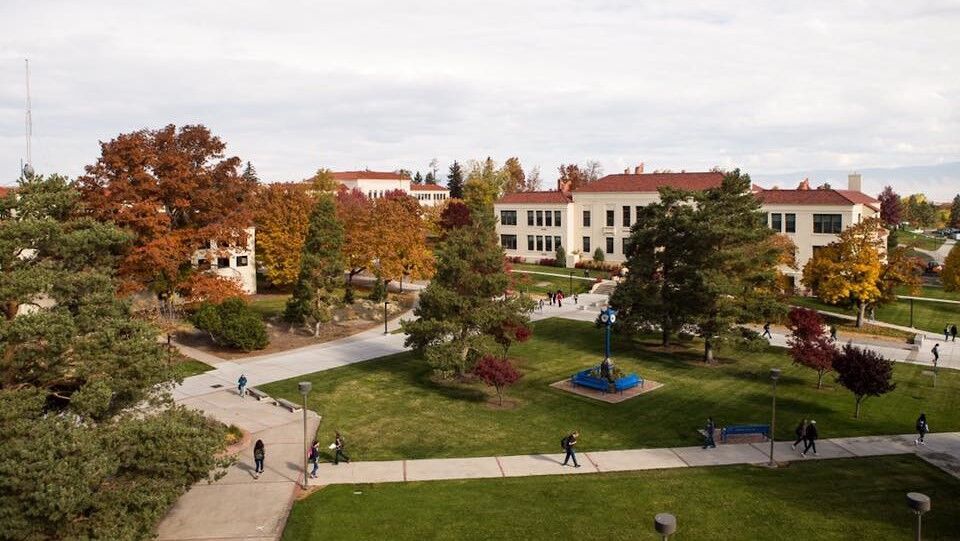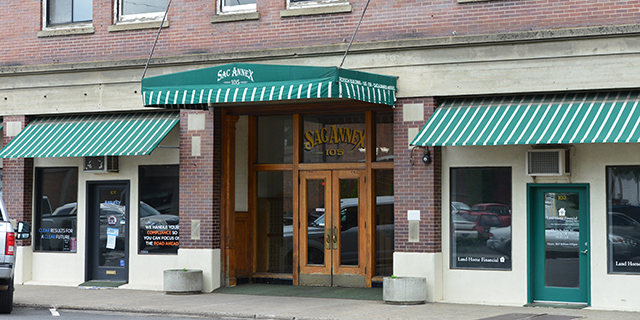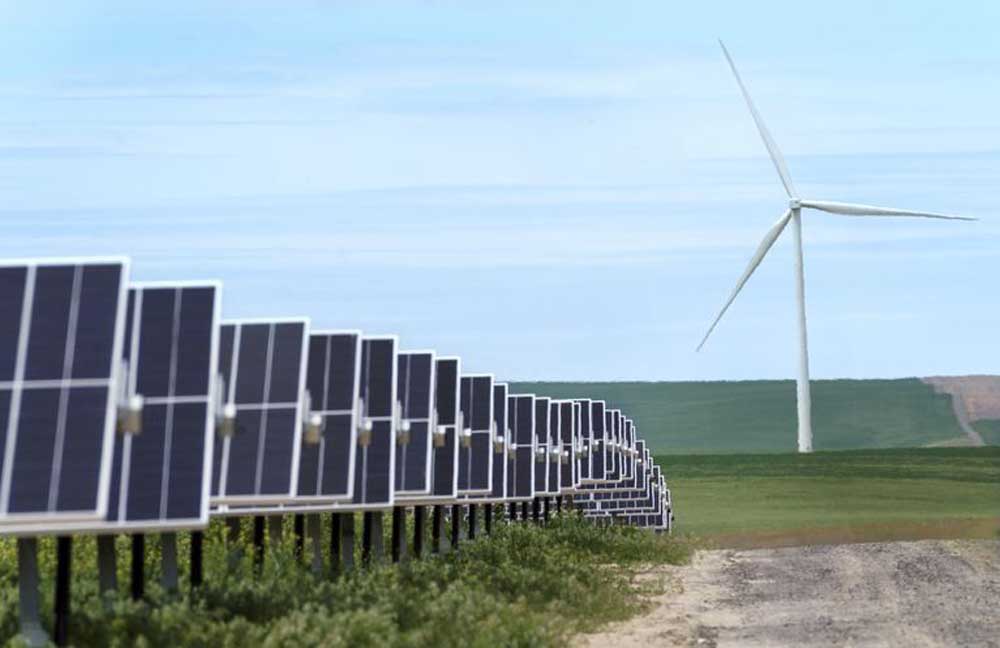Chance to host gubernatorial event on EOU campus fizzles out
Published 3:00 pm Friday, September 23, 2022

- Incoming Eastern Oregon University students this year will receive their financial aid packages much later than in the past.
LA GRANDE — An effort to host an on-campus gubernatorial candidates event at Eastern Oregon University for rural residents has stalled, according to the organization behind the attempt.
Jennifer Groth, director of policy and partnerships for Rural Development Initiatives, said in an email that a lack of a television sponsor for a pre-election event on the La Grande campus was ultimately what torpedoed the effort.
“Our initial hope with this proposal was to ensure that the gubernatorial candidates could hear directly from rural voters and that rural voters could hear directly from the candidates,” she said. “And so we thought this would be an opportunity to do that. I’m assuming there are other ways to connect those folks to one another, but that was our hope. And so, of course, we’re disappointed that it didn’t come to pass.”
The effort, Groth said, began following the primary when the field was set with Republican candidate Christine Drazan, Democratic candidate Tina Kotek and unaffiliated candidate Betsy Johnson. Groth said Rural Development Initiatives proposed to all three campaigns a series of virtual town hall meetings to represent different regions around the state, culminating in an in-person event on the campus of Eastern Oregon University.
“We talked to the different campaigns, and Tina Kotek’s campaign came back and said we could propose to do three virtual town halls, one for each candidate, and then participate in the culminating event at Eastern Oregon University,” she said.
There also was initial interest from Drazan’s campaign, Groth said.
“They basically told me, ‘Just let us know what’s happening, keep us in the loop, and we’ll let you know if we decide to participate,’” she said. “So I’ve been keeping them in the loop, but I haven’t heard much from that campaign.”
Groth said Johnson’s campaign staff indicated pretty much throughout early conversations that their interest was focused on televised opportunities to hear from the candidates as opposed to other types of formats because they thought that would reach the broadest number of Oregonians.
“So we first tried to arrange for live-streaming, which we could do with the resources that we had,” Groth said. “We went back to the campaigns and said we can provide a livestreaming option for the event. But Betsy Johnson’s campaign was actually interested in the television’s sponsor.”
Groth said if candidates are truly interested in representing the entire state, then opportunities in Eastern Oregon should be included.
“I’m concerned that hosting these events along the I-5 corridor or in more major metropolitan areas doesn’t get (rural) voices into the conversation, and so the issues that are of concern to those particular regions of the state don’t necessarily get addressed as part of the media coverage of the race,” she said.
Candidates give their reasons
Jennifer Sitton, communications director for the Betsy Johnson for Governor campaign, said Johnson “welcomes every opportunity to debate her fellow candidates and wants to ensure that as many Oregonians as possible are able to hear directly from the candidates, which is why we are prioritizing televised debates.”
Sitton said the Johnson campaign had assumed broadcasting facilities in the Tri-Cities would be willing to host a gubernatorial debate, despite being north of Oregon’s border in Washington. Sitton said the Johnson campaign was unclear on why that opportunity hasn’t arisen.
In July, all three candidates participated in an Oregon Newspaper Publishers Association debate that was streamed online rather than televised. Sitton explained that debate was a special circumstance as the ONPA is a “statewide newspaper association and the traditional first debate for gubernatorial candidates.”
Katie Wertheimer, communications director for Tina Kotek’s gubernatorial campaign, said Kotek hadn’t rejected the idea of an Eastern Oregon debate and had attended the Eastern Oregon Economic Summit in June, which featured all three candidates.
“We’re not aware of any debate invitations from other Eastern Oregon media outlets,” Wertheimer added.
Rural Development Initiatives, which had been attempting to organize a debate on EOU’s campus, is not a media outlet, though EOU offered to provide livestreaming resources to host a debate.
“Back in June, Tina agreed to eight joint forums and debates across the state, and ultimately all three candidates agreed to five,” Wertheimer said, listing the Economic Summit in Hermiston as well as other debates or forums in Welches, Bend, Medford and Portland.
John Burke, communications director for the Drazan campaign, said there was only one debate proposed in Eastern Oregon and the campaign “had some concerns with the format.” Burke did not comment on the nature of the concerns.
“Christine has spent more time in Eastern Oregon than any of the candidates running for governor,” he said, “and will continue to campaign hard to earn the votes of rural residents from now until Nov. 8.”
Party chairs react
Annette Lathrop, speaking as chair of the Wallowa County Republican Party, said she does not see much value to a debate in Northeastern Oregon because her county is isolated and few would have access to it. A debate at EOU, she said, likely would profit La Grande and Pendleton more.
“There are debates, and for people tuned into that, they are available,” she said. “We can access those debates.”
She also said candidates are busy and only human, and there is only so much they can squeeze into a day of campaigning. She said the candidates don’t need to physically come to Northeastern Oregon for voters to learn about them.
Union County Republican Party Chair Allen Duffy, however, said it’s a shame the gubernatorial candidates don’t hold a debate open to the public in Northeastern Oregon.
“I understand that three counties in Oregon can decide who is governor,” he said, “but that leaves the rest of us wondering who our candidates are.”
He said Drazan has visited Eastern Oregon several times and Kotek is firmly a leftist Democrat, but Johnson presents some questions as a former Democrat now running without a party, and a public debate “would give people here an opportunity to see who she is.”
Rural voters get campaign ads, literature and propaganda, he said, but coming out to Northeastern Oregon in person means voters here can see just where the candidates stand.
“If you really want to be true and honest to the voters, come out and have a debate,” Duffy said.
And a debate could fire up grassroots campaigning — knocking on doors, making phone calls, talking to people about candidates and issues.
“That’s what we do out here,” he said. “Grassroots campaigning.”
Mark Peterson, co-chair of Umatilla County Democrats, said he has seen statewide candidates operate this way for years.
“People really feel like they are being ignored out here,” he said.
Statewide candidates tend to pay lip service to rural Oregon, Peterson said, but focus their campaigns on Oregon’s population centers from Portland south to Eugene. He said that could be why Johnson has some traction in Northeastern Oregon: She seems to be popular here and could be working on getting rural Oregonians to back her to make up for what she may not get in the metro areas.
But he said she has a lot of ground to cover there. Recent polling shows Kotek and Drazan each winning about 30% of the vote while Johnson trails at about 20%.
‘A long shot’
Tim Seydel, EOU’s vice president for university advancement, said the school explored a couple of options, including Oregon Public Broadcasting or using the school’s resources to livestream an event on the internet.
“That was kind of a long shot, to see if OPB might be able to do it,” he said. “But based on the capacity to be able to do it again, it’s one of the challenges of being in a rural area.”
Seydel said the school continues to explore options, in case an 11th hour reprieve presents itself.
“It’s too bad we couldn’t get them to come to Eastern, to be here,” he said. “We were hoping to engage with students and area communities and other schools, but unfortunately it doesn’t look like we’ll get that shot this time around.”









